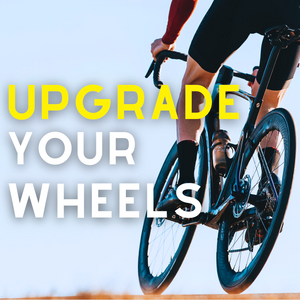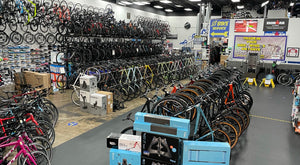 Athletes don't always applaud other triathletes when they say they are going to dip their toes back into the short course.
Athletes don't always applaud other triathletes when they say they are going to dip their toes back into the short course.
I will remind you again, the short course is no stinkin' joke!
It is demanding in a totally different way than the long course. You don't see folks running around with short course tattoos and telling everyone at the office about their 'long ride' they did over the weekend.
But rather, I have found most of these athletes are extremely humble, consistent, headstrong, and freakin' fast.
My hope and suggestion, before you 'turn your nose up' at the short course, read on.
Remember that this sport has so much to teach us about ourselves and the dynamics of racing at every distance and every level.
Here are just a few things I learned about the swim in short course and the drills to help implement the speed and skill to survive :)
SWIM
THE START
YEP, from the time that cannon/ gun goes off- IT'S A BURNER!
These athletes do not hold back or wait for others to 'go in front of them'. I noticed that like we teach in Playtri, most short course athletes want a bit of space and head for the edge of the start line in order to give themselves enough room to chase for their 'open water'. Once they settle into the swim, they are NOT slowing down- unlike the moderate effort of long course short course triathletes get comfortable real quick with the idea that they are going to be uncomfortable, THE ENTIRE SWIM.
Workout Skill/ Drill to Implement in Training:
Work on your deep water starts with sprint sets starting with 25's, all the way up to 300's. Do not give yourself much recovery but then again, if your pace drops drastically, either step it back to a shorter interval or increase the recovery between each- ideally on the longer sets like 150-300's you would sprint the first 50-100 and teach the body to hold the pace as much as possible.
ARM CADENCE
Every swimmer/ triathlete wants to talk about the 'glide/ pull' at calm water pool practices. That's cute, but we don't have a black line of a calm pool to follow in our open water swim races. So that essential 'glide' skill for pool, not so great for waves, current shifts, groups of athletes... short course athletes know how to move through the water regardless of the conditions. Most short course athletes have a continuous arm cadence- don't freak out, I did not say the pull is not important. What I am saying is that the continuous arm cadence is vital to move with fluidity through the water and around others.
Workout Skill/ Drill to Implement in Training:
Within the warm-up, I like athletes to do a 200-300yd/meter swim with a snorkel that purely focuses on the continuous arm cadence. Visualize a fan- the fan may have 3 different speeds BUT regardless of pace - it continuously spins. Within the workout, I encourage you to work this drill but implement it after speed or strength intervals to simulate how your body will 'default' come race day.
A great example would be to do a 10x100 pull set followed by 200yd/meter of the continuous arm drill with a snorkel.
What does this do? 1. Trains the body through fatigue to 'recover' in a forward progression, with far less effort 2. Teaches body fat efficiency 3. Teaches the body to stay on top of the water even through fatigue as the snorkel allows the athletes to focus strictly on the kick and arm cadence.
DRAFTING & RESPONSE TIME
Right now, pull up a long course age group swim start, then watch age group Nationals swim start. Notice something??? Long course athletes are spread out pretty far apart, even the top guys/girls are not so great at always finding themselves in a line and working with one another (until the last 200-300meters that is, but up until then, they have wasted a significant amount of energy and mental focus by swimming primarily in their own little bubble). Now watch Nationals, short course athletes may 'fight' their way to the front, but quickly, you see small packs and/or swimmers slip-streaming off the lead athletes. Research has shown over and over the significant benefits of drafting off others feet and/or hip has not only physical but also metabolic and mental advantages. Its a skill to learn!
Workout Skill/ Drill to Implement in Training:
Grab a few friends, head to the pool and hit the workout but alternate who leads ad practice both slipstreaming and the hip and feet. Notice the difference between being the second, third, fourth... girl/guy in line. Have the lead athlete (also useful for the slower swimmer) use fins in order to increase/ push the pace. Have a slower swimmer in front, great- work on not hitting their feet, maintaining a small continuous kick and stroke. No doubt, you want to practice drafting at all paces and positions on other athletes- WHY??? Because in a race, if another pack or swimmer from behind passes your group, you want to already be in proper position on top of the water to accelerate and respond to the other pack.
The other skill you want to work on while at the pool is your response time. Effective sighting is key in short course racing and essential to work with others. Instead of just doing your normal threshold intervals, ex: 5x300 @ pace- challenge your efforts with 5x300, sighting at least 1x every length. When you first do this main set, your times will most likely not match your normal 300yd/meter time. Don't freak out, but notice the discrepancy and keep practicing your sighting technique by slightly increasing your kick and simply glancing right above the water line each time you 'sight'.
FINAL KICK
You know how you hear a lot of coaches and/or triathletes warn about not 'kicking too much or wasting their legs in the swim.'
Ya, go ahead and nix that idea. Short course specialists know the value of 'creating a wake' behind them, literally!
You are going to have to train both your body and mind on this one- it hurts, your heart rate skyrockets when you first start incorporating this in your training (as with anything new, introducing a new concept in any part of your training will first increase heart rate and then it will drop as you become more effective with the skill), and it no doubt it is the exact opposite of what our brain tells us considering we are about to hit the pavement in a mad dash to our bikes out of the water.
Workout Skill/ Drill to Implement in Training:
At the end of a strength or speed pool session, put on your flippers, and finish with 3-5x100's swim with an exaggerated fast kick. The next week increase distance to something like 2x250, and the following week or two attempt the 500 'finishing kick' swim. No doubt, it's brutal, but it works!
I will say this, the absolute BEST way to practice triathlon swimming is through the obvious- GET TO SOME OPEN WATER SWIM PRACTICES.
Don't settle on simply doing the distance in the open water, nor is it ideal to just go out there alone.
But rather the more people you have to practice and push you, the better.
Pool swimming is good but again the best option is to get outside in the true elements of short course triathlon swimming.
Next up we will look at the dynamics of short course and racing and how the bike segment is DRASTICALLY different than the long course.
Until next time, train with a smile~




